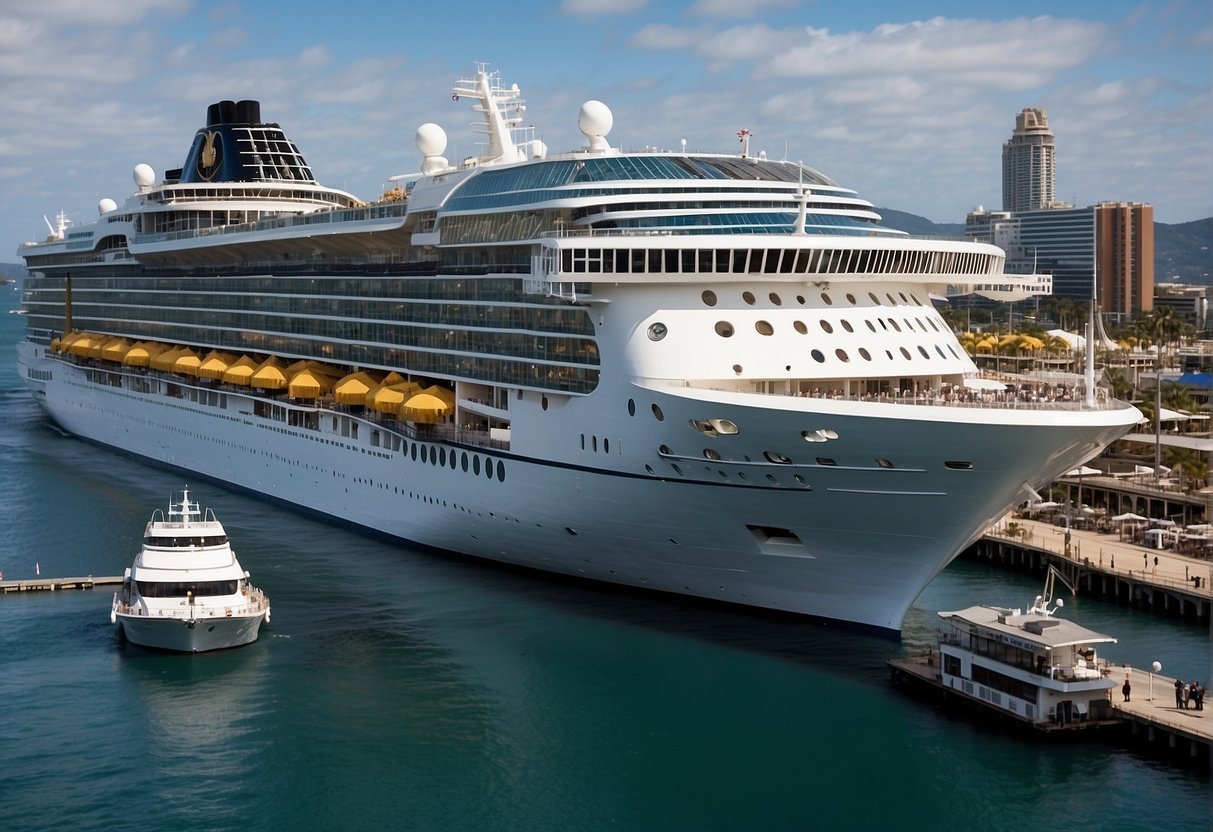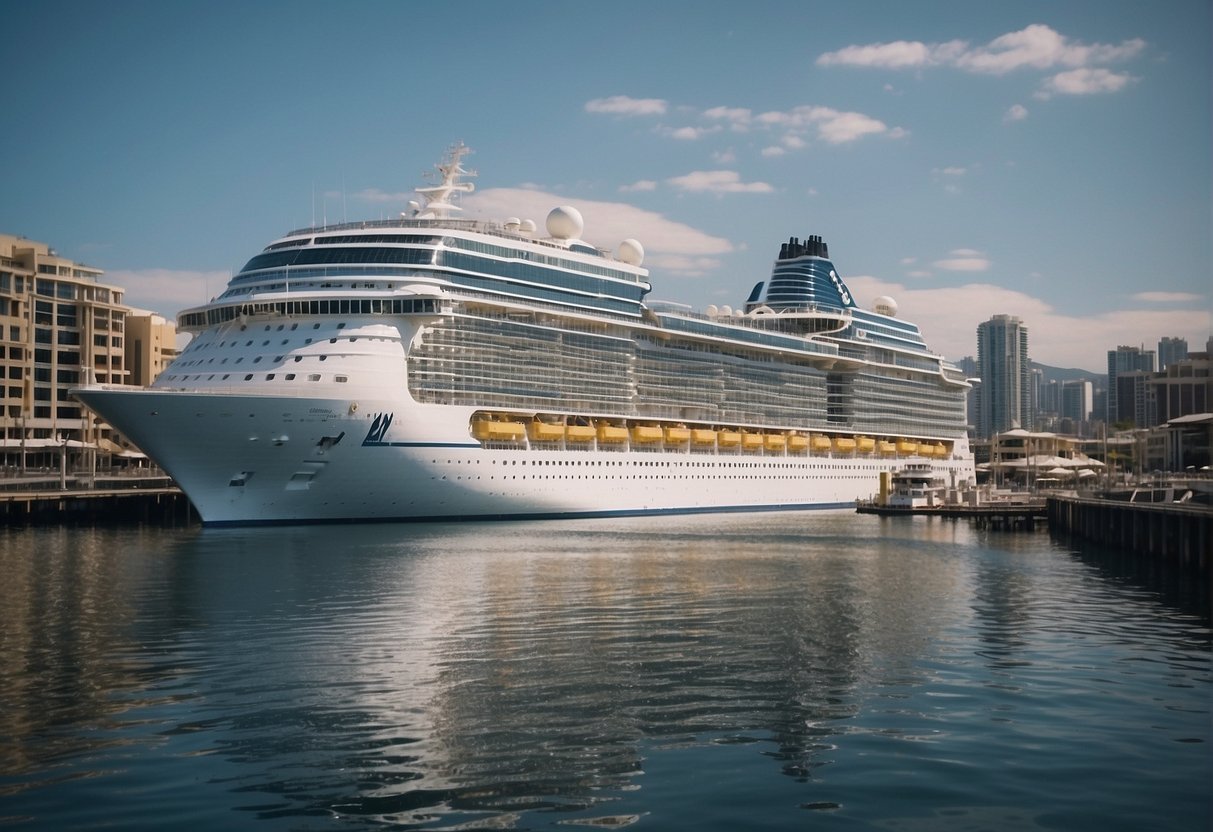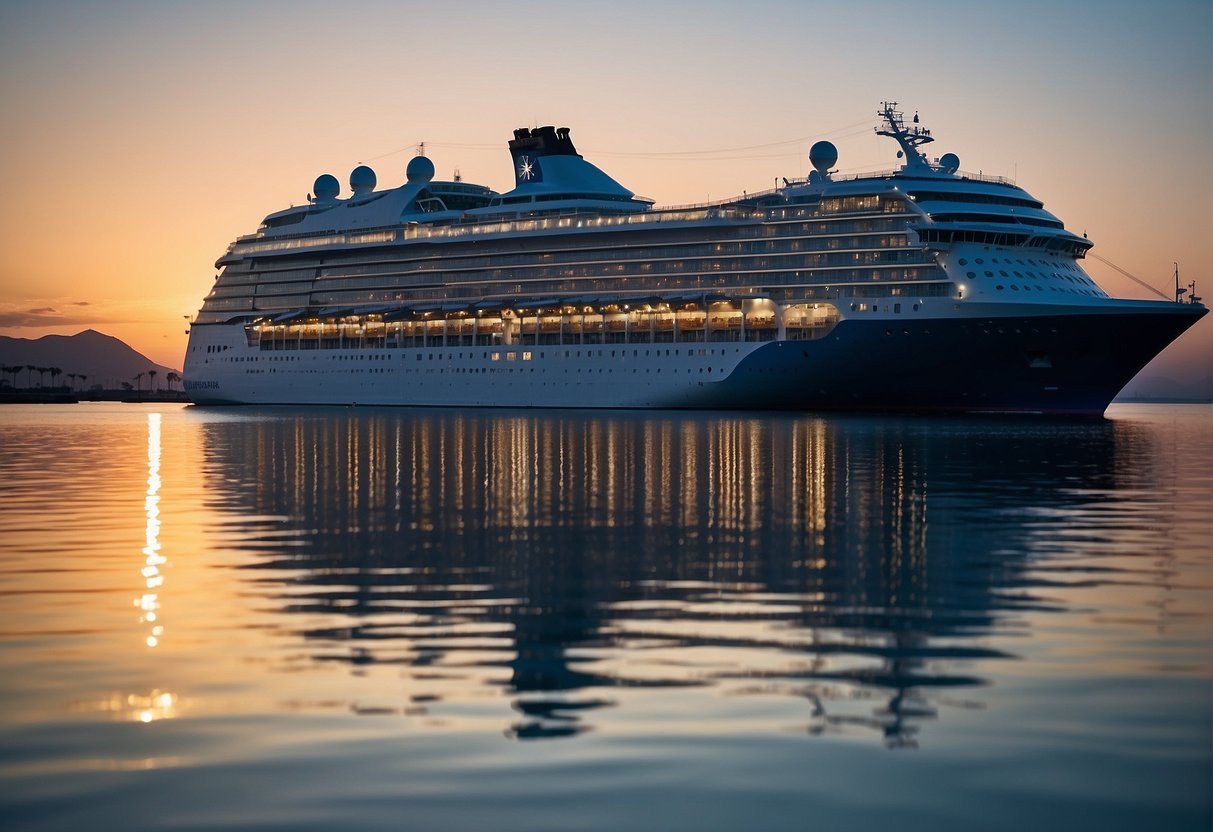¿Cuánto pesa un crucero? Los hechos sobre los gigantes marítimos
A cruiseliner is a floating marvel, often compared to a city at sea, and with such vastness comes a staggering weight. When standing on the dock, gazing up at the massive hull, it’s natural to wonder how heavy these behemoths are.
Gauging their weight isn’t as straightforward as placing them on a giant scale. Instead, the industry uses a measurement known as gross tonnage, which factors in the ship’s internal volume rather than its weight in seawater. This figure helps determine everything from the ship’s stability to port fees.

Cruise ships vary widely in size, with the average modern-day large vessels tipping the gross tonnage scales at around 200,000 GTs.
However, specific ship weights can range from the relatively petite 10,000 GT luxury yachts to the colossal cruise liners surpassing 200,000 GTs. This measurement isn’t static either; it can fluctuate based on the number of passengers aboard, provisions, fuel levels, and other variable factors during different stages of a voyage.
How Much Does a Cruise Ship Weigh? – Key Takeaways
- Cruise ship weight is measured in gross tonnage, encompassing internal volume.
- A modern large cruise ship averages around 200,000 GTs, with a range depending on class and size.
- Ship weights vary with operational factors like passenger capacity and fuel.
Basics of Cruise Ship Weight

Weight is not just a number but a science for cruise ships. Understanding their mass and the terms used to define it helps us appreciate the engineering feats behind these floating giants.
Understanding Gross Tonnage
Gross tonnage (GT) refers to the overall internal volume of a cruise ship. One tonne equals 100 cubic feet of space. The gross tonnage of cruise ships does not indicate their actual weight, a common misconception. Instead, it measures their volume, including all the hull spaces available to passengers, multitud, machinery, and equipment.
- Symphony of the Seas, for instance, has a gross tonnage of 228,081, reflecting its massive volume rather than weight.
- Gross tonnage is used for regulations, safety measures, and port fees.
Weight Versus Size and Volume
While size and volume play a crucial role, knowing the actual weight of a cruise ship involves two key terms: displacement y lightship weight. Displacement is the weight of the water a ship pushes aside when floating, directly correlating to its weight. Lightship weight, or displacement unladen, is the ship’s weight without fuel, passengers, cargo, or stores.
- The weight of the water displaced is equal to the total load; thus, a more significant displacement means a heavier ship.
- Cruise ships generally range from 50,000 to 200,000 tons in weight, depending on the size and volume. The term tonnage is often confusing but relates to volume and capacity, not the weight measured in tons.
Cruise Ship Specifications

Understanding the specifics of a cruise ship’s design is crucial in grasping its massive scale. These floating cities are marvels of modern engineering, with each component carefully crafted to balance the demands of size and safety.
Dimensions and Measurements
Oasis of the Seas and its sister ships, including Allure of the Seas, Symphony of the Seas, y Harmony of the Seas, are some of the largest cruise ships in the world. Their dimensions are staggering:
- Length (LOA): Approximately 1,180 feet
- Width (Beam): About 154 feet
- Height: Nearly equivalent to a 20-story building
These measurements contribute to the ship’s impressive passenger capacity, accommodating thousands of guests and crew members on each voyage.
Design and Construction
The design of a cruise ship is a fine-tuned balance of aesthetic appeal, efficient use of space, and structural integrity. Materials like steel y aluminium are commonly used for the hull and superstructure. A notable feature is the draft, the vertical distance between the waterline and the bottom of the hull, which affects the ship’s stability in water.
River cruise ships differ markedly from ocean liners in design, with a more shallow draft allowing navigation through narrower and shallower waterways.
Types and Classes of Cruise Ships
Cruise ships fall into different classes based on size, amenities, and destinations. For example:
- Ocean Liners: Built for transoceanic travel, traditionally more immense and with stronger hulls for rough seas.
- River Cruise Ships: Smaller vessels designed for river itineraries, offering a more intimate experience.
Each class caters to different passenger preferences, whether one seeks the grandeur of an ocean voyage or the tranquillity of a river journey.
Operational Aspects
Regarding the might and majesty of cruise ships, the operational intricacies are as impressive as their vast silhouettes against the horizon. Here, we’ll steer through the operational aspects crucial for keeping these leviathans of leisure afloat, efficient, and enjoyable.
Cruise Ships by the Numbers
Gross Tons and Deadweight Tonnage: The weight of a cruise ship is typically measured in gross tons, a unit that reflects the ship’s overall internal volume. To give a sense of scale, mega cruise ships like the Wonder of the Seas can register over 230,000 gross tons. On the other hand, deadweight tonnage accounts for the weight a ship can safely carry, including fuel, fresh water, passengers, and crew.
Top Contenders: Algunos de los heaviest cruise ships in the industry currently include:
- MSC Meraviglia: 171,598 GT
- MSC Grandiosa: 177,100 GT
- Mardi Gras: 180,800 GT
Fuel, Machinery, and Efficiency
Fuel Consumption: Fuel is the lifeline of cruise ship operations, where larger vessels like the Norwegian Bliss consume upwards of 66,000 gallons of fuel per day. The industry is moving towards more sustainable alternatives, with ships like Aidanova embracing LNG (liquefied natural gas) for reduced emissions.
Machinery Maintenance: The cost of maintaining colossal machinery, such as diesel engines and propulsion systems, is substantial. Regular maintenance is critical to preventing malfunctions that can cost the cruise line in terms of lost revenue and passenger discontent.
Cruise Ship Amenities and Features
Anchor Attractions: Beyond the nuts and bolts, amenities on board enhance the cruise experience significantly. For example, the MSC Virtuosa boasts high-end dining options, multiple swimming pools, and a grand theatre. These amenities add to the weight and significantly to the ship’s appeal.
Balancing Features and Weight: Each new feature, from water slides to speciality restaurants, adds to the overall weight of the vessel, impacting fuel efficiency and operational costs. Designers must balance these with the structural integrity and buoyancy of the cruise ship, ensuring a safe and pleasurable voyage.
Environmental and Economic Impact
When considering the behemoths that traverse our oceans, it’s pivotal to acknowledge these vessels’ dualities—nurturing economic prosperity while taming environmental footprints. Let’s dive into the specifics.
Sustainable Practices and Materials
Spearheading the shift towards environmental stewardship, cruise lines like Royal Caribe Internacional y Norwegian Cruise Line have adopted sustainable construction materials and practices. Innovation is at the helm in the race to reduce the ecological footprint—with advanced waste management systems y energy-efficient designs.
For example, these companies often utilize scrubber systems to reduce sulfur emissions and improve air quality around European y Caribbean destinations.
- Material Choices: Incorporation of lightweight materials for better fuel efficiency.
- Waste Treatment: Advanced water treatment systems on board to protect marine life.
Cruise Industry and Economic Factors
The economic leverage of the cruise industry is undeniable. The ripples are felt far and wide, from creating jobs in destination ports to stimulating local economies with passenger spending on dining options and wine. However, with prosperity comes the responsibility of sustaining the locales that so richly contribute to the industry’s success.
- Job Creation: Employment opportunities onboard and ashore.
- Local Economy Boost: Increased attractions, restaurants, and local product spending.
Economic indicators underscore that sustainability and profitability are not mutually exclusive. As cruise ships implement green technologies and practicas sustentables, they set a course for an economically and environmentally resilient future.




